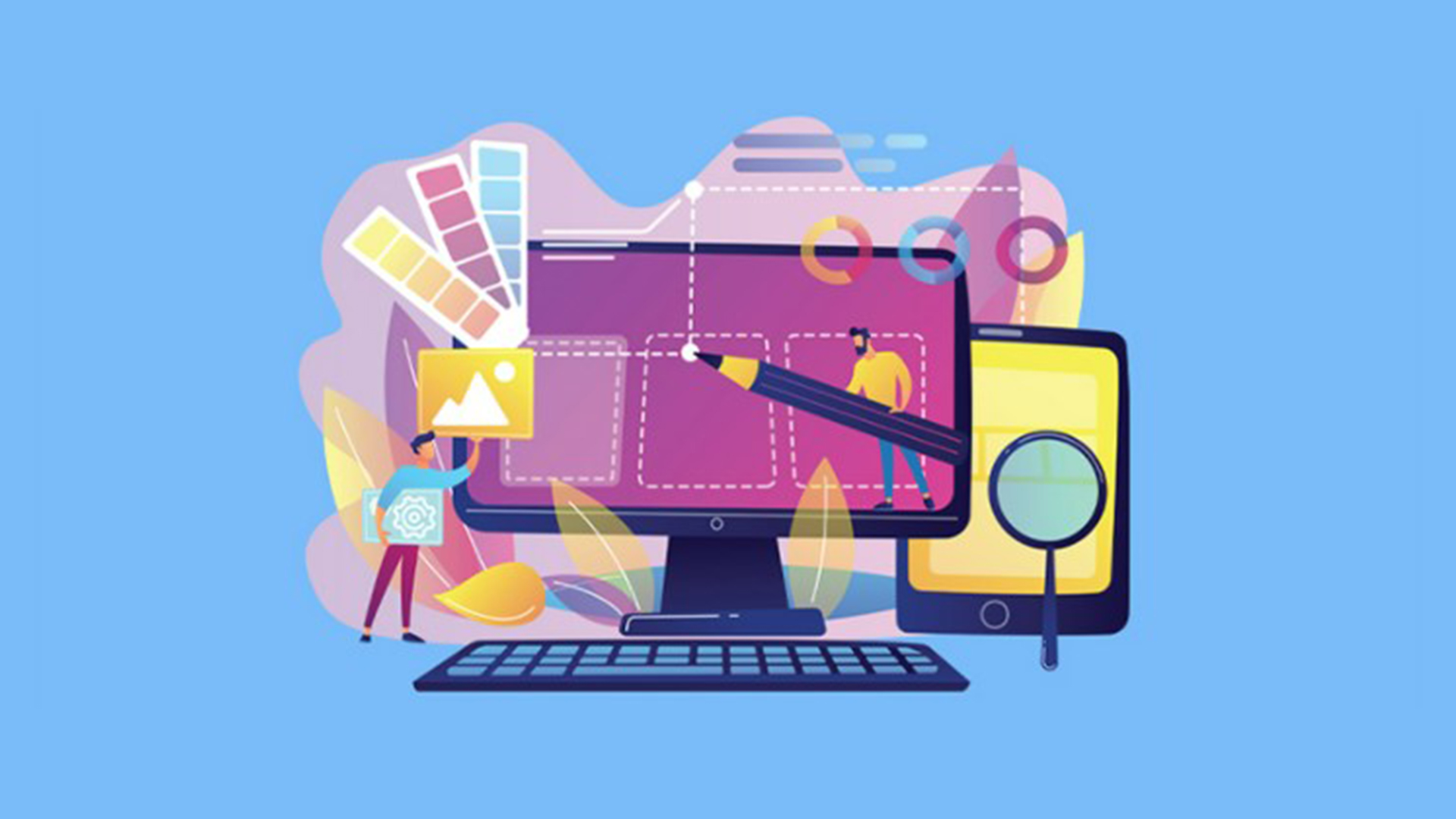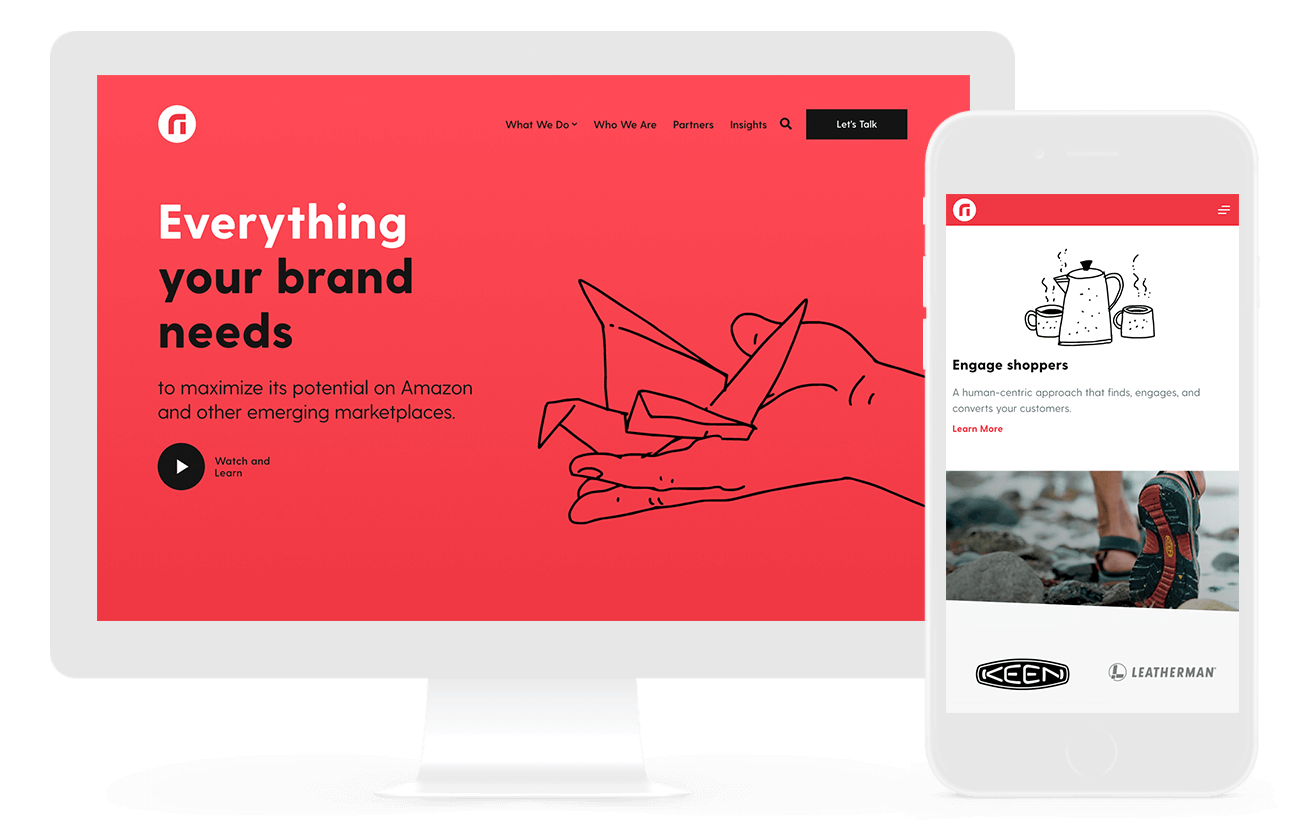All Categories
Featured
Table of Contents
- – Learn Web Design With Online Courses, Classes,...
- – Beginner's Guide: How To Learn Web Design At ...
- – Web Designer News - The Best Curated News For...
- – Trajectory: Atlanta Web Design Company Tips a...
- – Web Design Services + Website Development Age...
- – Web Design Courses & Tutorials - Codecademy T...
- – Awwwards - Website Awards - Best Web Design ...
- – Otc Web Design Girdwood, Alaska - Web Design...
- – Awwwards - Website Awards - Best Web Design ...
- – Web Design And Applications - W3c Tips and T...
- – 10 Good Deeds In Web Design - Nielsen Norman...
Learn Web Design With Online Courses, Classes, & Lessons Tips and Tricks:
Quick summary Usability and the utility, not the visual style, identify the success or failure of a site. Since the visitor of the page is the only individual who clicks the mouse and for that reason chooses whatever, user-centric style has actually established as a standard technique for successful and profit-oriented web design - web design frederick md.
and the utility, not the visual style, figure out the success or failure of a website. Given that the visitor of the page is the only person who clicks the mouse and for that reason decides whatever, user-centric design has become a standard method for successful and profit-oriented website design. If users can't use a function, it might as well not exist.
g. where the search box should be positioned) as it has currently been done in a number of articles; instead we concentrate on the techniques which, utilized correctly, can lead to more advanced style decisions and streamline the procedure of perceiving presented details. Please observe that you may be thinking about the usability-related posts we've published prior to: Principles Of Excellent Website Design And Reliable Web Style Guidelines, In order to use the principles effectively we first require to understand how users connect with websites, how they believe and what are the standard patterns of users' habits.
Beginner's Guide: How To Learn Web Design At Home - Medium Tips and Tricks:
Visitors glimpse at each new page, scan a few of the text, and click the first link that captures their interest or vaguely looks like the important things they're looking for. There are large parts of the page they do not even look at. A lot of users look for something fascinating (or beneficial) and clickable; as quickly as some promising prospects are found, users click.
If a page offers users with premium material, they are prepared to compromise the content with ads and the design of the website. This is the reason that not-that-well-designed websites with top quality content get a great deal of traffic over years. Content is more crucial than the style which supports it.

Users don't check out, they scan. Notification how "hot" locations abrupt in the middle of sentences. This is typical for the scanning process. Really simple principle: If a website isn't able to meet users' expectations, then designer failed to get his job done effectively and the business loses cash. The higher is the cognitive load and the less instinctive is the navigation, the more ready are users to leave the website and search for options.
Web Designer News - The Best Curated News For Designers Tips and Tricks:
Neither do they scan web page in a direct style, going sequentially from one website area to another one. Rather users satisfice; they pick the very first affordable alternative. As quickly as they discover a link that looks like it might result in the objective, there is a very good opportunity that it will be instantly clicked.
It doesn't matter to us if we comprehend how things work, as long as we can utilize them. If your audience is going to act like you're developing signboard, then design fantastic billboards." Users wish to be able to manage their internet browser and count on the consistent information discussion throughout the website.
If the navigation and website architecture aren't intuitive, the number of enigma grows and makes it harder for users to understand how the system works and how to obtain from point A to point B. A clear structure, moderate visual ideas and quickly recognizable links can assist users to discover their path to their aim.
Trajectory: Atlanta Web Design Company Tips and Tricks:

claims to be "beyond channels, beyond products, beyond distribution". What does it mean? Because users tend to explore websites according to the "F"-pattern, these three declarations would be the first elements users will see on the page once it is loaded. The design itself is simple and instinctive, to understand what the page is about the user requires to search for the response.
When you've attained this, you can communicate why the system works and how users can gain from it. Individuals won't use your website if they can't discover their method around it. 2. Don't Misuse Users' Perseverance, In every task when you are going to provide your visitors some service or tool, try to keep your user requirements minimal.
Newbie visitors want to, not filling long web forms for an account they may never utilize in the future. Let users check out the site and discover your services without forcing them into sharing personal information. It's not affordable to require users to enter an email address to check the feature.
Web Design Services + Website Development Agency Tips and Tricks:
And that's what you want your users to feel on your web website. The registration can be done in less than 30 seconds as the kind has horizontal orientation, the user does not even need to scroll the page.
A user registration alone is sufficient of an impediment to user navigation to cut down on incoming traffic. Handle To Focus Users' Attention, As websites supply both static and dynamic material, some elements of the user interface attract attention more than others do.
Focusing users' attention to specific areas of the website with a moderate use of visual aspects can help your visitors to obtain from point A to point B without thinking of how it in fact is supposed to be done. The less question marks visitors have, the they have and the more trust they can establish towards the business the site represents.
Web Design Courses & Tutorials - Codecademy Tips and Tricks:
Make Every Effort For Feature Exposure, Modern web designs are generally slammed due to their approach of guiding users with visually appealing 1-2-3-done-steps, big buttons with visual effects and so on. From the design point of view these components actually aren't a bad thing.
The site has 9 primary navigation alternatives which are visible at the first look. The option of colors might be too light. is an essential concept of effective user interface style. It doesn't really matter how this is achieved. What matters is that the content is well-understood and visitors feel comfy with the method they engage with the system.
com gets directly to the point. No adorable words, no overemphasized declarations. Rather a cost: simply what visitors are trying to find. An optimal service for reliable writing is touse brief and succinct phrases (come to the point as quickly as possible), usage scannable layout (categorize the content, use numerous heading levels, use visual elements and bulleted lists which break the circulation of uniform text blocks), usage plain and unbiased language (a promotion does not need to sound like ad; provide your users some sensible and unbiased reason that they need to use your service or stay on your website)6.
Awwwards - Website Awards - Best Web Design Trends Tips and Tricks:
Users are seldom on a website to take pleasure in the style; in addition, most of the times they are looking for the information in spite of the style - web design frederick md. Pursue simplicity instead of intricacy. From the visitors' point of view, the very best website style is a pure text, with no ads or additional material obstructs matching exactly the question visitors used or the content they have actually been searching for.
Finch clearly provides the details about the site and gives visitors a choice of choices without overcrowding them with unnecessary content. Not only does it assist to for the visitors, but it makes it possible to perceive the info provided on the screen.
Complex structures are harder to read, scan, examine and work with. If you have the choice in between separating 2 style sections by a noticeable line or by some whitespace, it's normally much better to use the whitespace solution. (Simon's Law): the better you manage to provide users with a sense of visual hierarchy, the much easier your content will be to view.
Otc Web Design Girdwood, Alaska - Web Design & Google ... Tips and Tricks:
The exact same conventions and rules need to be applied to all elements.: do the most with the least quantity of hints and visual components. Clarity: all elements ought to be developed so their meaning is not uncertain.
Conventions Are Our Buddies, Traditional design of site components doesn't result in a dull web website. It would be an usability problem if all websites had various visual presentation of RSS-feeds.
understand what they're getting out of a website navigation, text structure, search placement etc. A case in point from functionality sessions is to equate the page in Japanese (assuming your web users do not know Japanese, e. g. with Babelfish) and offer your use testers with a task to discover something in the page of different language.
Awwwards - Website Awards - Best Web Design Trends Tips and Tricks:
Steve Krug recommends that it's much better to, however make the most of conventions when you don't. 10. Test Early, Test Typically, This so-called TETO-principle needs to be applied to every web design task as use tests typically supply into significant problems and issues associated with a given design. Test not too late, not too little and not for the wrong factors.
Some essential indicate remember: according to Steve Krug, and screening one user early in the task is much better than testing 50 near the end. Accoring to Boehm's first law, mistakes are most frequent during requirements and design activities and are the more pricey the later they are gotten rid of.
That implies that you create something, test it, repair it and after that test it once again. There may be problems which haven't been discovered during the very first round as users were almost obstructed by other problems. usability tests. Either you'll be indicated the problems you have or you'll be indicated the lack of major style flaws which remains in both cases a helpful insight for your project.
Web Design And Applications - W3c Tips and Tricks:

This holds for designers as well. After you've worked on a site for few weeks, you can't observe it from a fresh viewpoint any longer. You understand how it is developed and for that reason you understand exactly how it works you have the knowledge independent testers and visitors of your site would not have.
It can be connected to other locations such as graphic design, user experience, and multimedia arts, however is more appropriately seen from a technological standpoint. It has become a big part of people's everyday lives. It is hard to picture the Internet without animated graphics, various designs of typography, background, videos and music.

During 1991 to 1993 the Internet was born. Text-only pages could be seen using a simple line-mode browser. In 1993 Marc Andreessen and Eric Bina, created the Mosaic browser. At the time there were several internet browsers, however most of them were Unix-based and naturally text heavy. There had actually been no integrated technique to graphic design aspects such as images or sounds.
10 Good Deeds In Web Design - Nielsen Norman Group Tips and Tricks:
The W3C was produced in October 1994 to "lead the World Wide Web to its complete potential by developing common procedures that promote its evolution and guarantee its interoperability." This dissuaded any one business from monopolizing a propriety browser and shows language, which could have modified the impact of the Web as a whole.
As this has actually happened the innovation of the web has also moved on. There have actually also been substantial changes in the way people use and access the web, and this has actually changed how websites are created.
Learn more about Lovell Media Group LLC or TrainACETable of Contents
- – Learn Web Design With Online Courses, Classes,...
- – Beginner's Guide: How To Learn Web Design At ...
- – Web Designer News - The Best Curated News For...
- – Trajectory: Atlanta Web Design Company Tips a...
- – Web Design Services + Website Development Age...
- – Web Design Courses & Tutorials - Codecademy T...
- – Awwwards - Website Awards - Best Web Design ...
- – Otc Web Design Girdwood, Alaska - Web Design...
- – Awwwards - Website Awards - Best Web Design ...
- – Web Design And Applications - W3c Tips and T...
- – 10 Good Deeds In Web Design - Nielsen Norman...
Latest Posts
Pueblo Web Design Tips and Tricks:
10 Principles Of Good Web Design - Smashing Magazine Tips and Tricks:
Web Design Software By Xara Tips and Tricks:
More
Latest Posts
Pueblo Web Design Tips and Tricks:
10 Principles Of Good Web Design - Smashing Magazine Tips and Tricks:
Web Design Software By Xara Tips and Tricks: